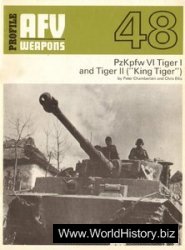And abroad, and was a substantial obstacle to improving relations with the United States. In July 1986 the Soviet Union raised the possibility of establishing a timetable for withdrawal. In April 1988 the Geneva Accords were signed, which agreed a timetable so long as outside powers did not interfere in Afghanistan’s internal affairs. By August 15 1988 half the Russian forces had departed, the rest by February 15 1989. BHR.
Afrika Korps. Rommel’s armoured force, shipped to Libya in February 1941; referred to as the dak {Deutsches Afrika Korps).
Agadir crisis see moroccan war.
Agent Orange see chemical
WEAPONS.
Agroville Program. To cope with increased insurgent activity in South Vietnam, President Ngo Dinh Diem launched the Agroville Program in 1959. The program divided the population of insecure areas into loyal and disloyal groups and resettled villages where the government could improve control. However, by attaching a stigma of disloyalty and forcibly resettling people without adequate provision for their welfare, the programme provoked opposition from peasants. Diem’s critics, and American aid officials alike. When the programme ended in 1961, only 23 agrovilles had been stablished; these foreshadowed the Strategic Hamlet Program.
AH-1 Cobra. An American attack helicopter derived from the earlier UH-1 Iroquois utility model, which was the workhorse of the US Army during most of the Vietnam War. See also helicopter.
Airborne operations. The application of military force, through airlanding or parachute descent, at the point where a decision is required.
Airborne Early Warning and Control System (AWACS). An
Aircraft carrying a long-range radar and the human and electronic command and control apparatus to allow the management of the air battle. The term is especially associated with the Boeing E-3
Sentry aircraft operated by the usAE, an integrated nato force and Saudi Arabia. After the failure of its own AWACS version of Nimrod, the UK is purchasing the E-3.
Aircraft. Brief notes on various aircraft types are to be found listed alphabetically throughout this volume. These notes do not constitute an exhaustive or wholly representative list: they are generally typical of their periods. In many cases, designs developed through long series of sub-types; and for practical reasons it is impossible to cover all in every particular. The listed aero-engines are likewise representative rather than comprehensive; details of performance and armament generally represent “best possible” figures and are usually mutually exclusive (for example, the carrying of a specific weapons load over a set distance could impose limitations of speed, range and defensive armament).
Aircraft carrier. A class of warship designed to accommodate aircraft and to provide for their takeoff and landing at sea. Their origin is to be found in the US cruisers Birmingham and Pennsylvania from and onto which Eugene Ely succeeded respectively in taking off and landing on November 10 1910 and January 18 1911. The French and the British followed suit and several ships, notably hms Furious, were adapted for the purpose. Landing on board, however, continued to be most hazardous until the first completely flat top vessel, HMS Argus, came into service in 1918. From her, the first authentic aircraft carrier, the whole class has descended. Naval operations in World War II, and especially those of the US and Japan in the Pacific, indicated that aircraft carriers had superseded battleships as capital ships, but subsequently they were held to have been displaced by nuclear-powered hunter submarines. In recent times, the matter has been put in doubt; although officially they had earlier been abandoned, British aircraft carriers played a decisive role in the Falklands War and the US Navy keeps large carriers in commission. ANF.
Air Cushion Vehicle (ACV) see
HOVERCRAFT.
Airey, Lt Gen Sir Terence. (190084). Br. Head of Intelligence at Allied Force Headquarters, who, with Gen Lemnitzer and Allen Dulles, negotiated the German surrender in Italy on May 2 1945.
Air Interception (AI). British airborne radar for detecting enemy aircraft. Introduced 1940.
Air Pressure Strategy and Targeting system. In 1952, the usAF evolved the doctrine of air pressure in an attempt to find a decisive role in the Korean War. The aim was to increase the costs of the war to the communist bloc and produce a breakthrough at the truce talks. This meant bombing North Korean targets of economic value to the Soviet Union and China. It also meant area attacks on cities like Pyongyang to break North Korean morale. The most important air pressure target, the Suiho power station which supplied electricity to both China and the DPRK, was bombed in June 1952. In May 1953 the dams which supplied water for the rice crop were attacked, causing extensive flooding. CM. See also “strangle” operation; usaf in korea.
Air Raid Precautions (ARP).
British civil defence, i. e. shelters, warning, rescue, evacuation etc.
Air-sea rescue. The organization and employment of specially equipped helicopters and fast vessels for the retrieval of aircrew and other survivors at sea.
Airships. These were basically of two kinds; rigid, i. e. frames with outer skins containing gas bags, and non-rigid, i. e. gas-filled balloons. They were used in World War I for reconnaissance by many belligerents, but their most important roles were developed by the Germans, who, through Count Zeppelin, led the field. By 191418, Zeppelin long-range bombers could lift 50 tons, attain 80mph (130kph) and 20,000ft (6,100m). Their large size (2,400,000 cu ft/ 70,000 cu m) limited manoeuvrability, and inflammability made them highly vulnerable to ground and air defences. After heavy losses in 1916, they were used less for strategic bombing than for naval reconnaissance. ANF.




 World History
World History









